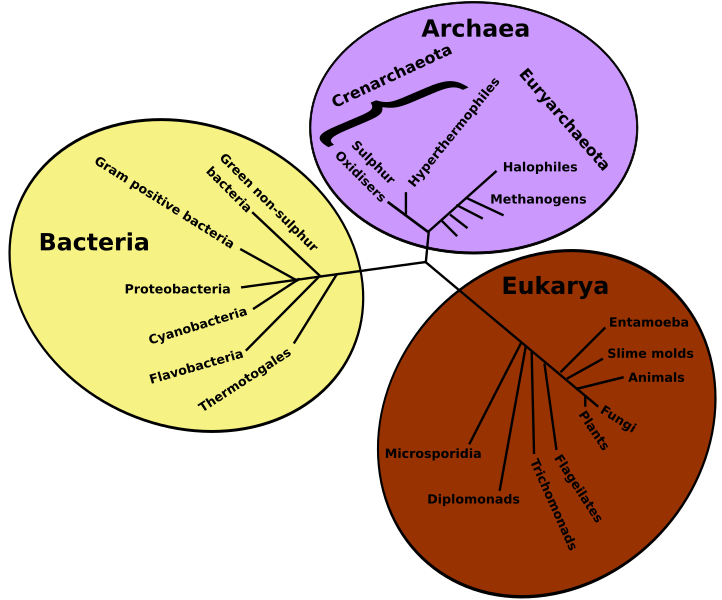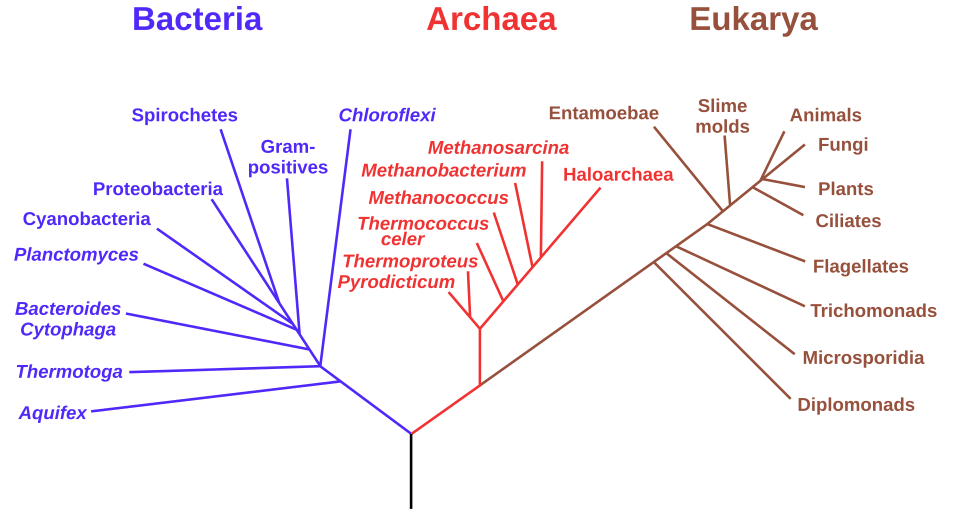OCR Specification focus:
‘Describe taxonomic ranks: kingdom, phylum, class, order, family, genus and species, and recognise the domain level in modern classification.’
Classification organises Earth’s immense biological diversity into structured categories. It enables scientists to identify, study, and communicate about organisms based on shared characteristics and evolutionary relationships.
The Purpose of Biological Classification
Biological classification provides a systematic method for grouping organisms according to shared features and evolutionary ancestry. This approach allows scientists to:
Identify and name species accurately.
Understand relationships between organisms.
Predict characteristics shared by related organisms.
Facilitate communication across languages and regions through a universal system.
Classification is part of taxonomy, the science of naming and classifying organisms, which itself is guided by principles of phylogeny, the study of evolutionary relationships.
The Hierarchical System of Classification
Classification is organised into a hierarchy of taxonomic ranks, where each successive level groups organisms based on increasingly specific shared characteristics. This system reflects both morphological (structural) and genetic similarities.
The Major Taxonomic Ranks
From the broadest to the most specific, the seven main taxonomic ranks are:
Kingdom – the highest traditional rank, grouping very large numbers of organisms with fundamental similarities (e.g. Animalia, Plantae).
Phylum – organisms within a kingdom that share a basic body plan or organisation (e.g. Chordata, animals with backbones).
Class – divides a phylum into groups with further shared characteristics (e.g. Mammalia within Chordata).
Order – a subdivision of class; members share additional similarities (e.g. Primates).
Family – groups closely related genera; usually share obvious anatomical or genetic traits (e.g. Hominidae).
Genus – a group of closely related species that share common features (e.g. Homo).
Species – the basic unit of classification; individuals capable of interbreeding to produce fertile offspring (e.g. Homo sapiens).
Species: A group of organisms capable of interbreeding to produce fertile offspring and reproductively isolated from other groups.
Each level of classification becomes more specific, showing increasing similarity among its members.
Domains: The Highest Rank in Modern Classification
Modern biological classification incorporates an additional level above kingdoms: the domain.

An rRNA-based tree of life highlights the three domains—Bacteria, Archaea, and Eukaryotes—that sit above kingdoms in modern classification. The diagram emphasises deep evolutionary splits inferred from molecular data. Some fine-print notes on alternative rootings reflect ongoing scientific debate (extra detail beyond the OCR core). Source.
The three-domain model, proposed by Carl Woese (1977), is based on molecular and genetic evidence, particularly differences in ribosomal RNA sequences.
The Three Domains
Bacteria – prokaryotic, unicellular organisms with no membrane-bound organelles; have peptidoglycan in their cell walls.
Archaea – also prokaryotic but distinct from bacteria; live in extreme environments, possess unique lipids in cell membranes, and lack peptidoglycan.
Eukarya – eukaryotic organisms with membrane-bound organelles and nuclei; includes kingdoms such as Animalia, Plantae, Fungi, and Protoctista.
This model replaced the earlier five-kingdom system, which could not adequately represent fundamental genetic differences between prokaryotic groups. Domains therefore represent the most ancient divisions of life and emphasise molecular evidence over morphology.
Understanding Hierarchy Through Examples
Consider the classification of humans as an example:
Domain: Eukarya
Kingdom: Animalia
Phylum: Chordata
Class: Mammalia
Order: Primates
Family: Hominidae
Genus: Homo
Species: Homo sapiens
This hierarchy reveals both broad similarities with other animals (e.g. vertebrates, mammals) and unique traits defining humans as a distinct species.
The Basis for Classification
Classification relies on observable and measurable features. Scientists use a range of criteria to determine relationships:
Anatomical features, such as body structure and organ systems.
Physiological characteristics, including modes of nutrition and reproduction.
Molecular evidence, such as DNA, RNA, and protein similarities.
Embryological development, providing clues about evolutionary ancestry.
Modern classification increasingly depends on molecular and genetic data, as these offer precise evidence of evolutionary relatedness. Morphological similarities alone may be misleading due to convergent evolution, where unrelated species evolve similar features independently.
The Role of Taxonomy and Nomenclature
The field of taxonomy defines how organisms are named and classified. Each species is given a binomial name using the binomial nomenclature system, consisting of the genus and species names (e.g. Homo sapiens). This ensures global consistency and avoids confusion caused by local or common names.
Taxonomy: The branch of biology concerned with the classification, identification, and naming of organisms.
Taxonomists use phylogenetic trees to represent evolutionary relationships between taxa, showing lines of descent and common ancestry.

A simplified phylogenetic tree diagram shows how branching from a root yields lineages, with nodes marking divergence events. Such trees underpin modern classification by summarising hypothesised evolutionary relationships. The figure includes LUCA and domain-level branches—slightly more than the OCR minimum but directly supportive of the phylogeny link in the notes. Source.
Advantages of Hierarchical Classification
A hierarchical system benefits biological study by:
Providing a universal language understood across nations and disciplines.
Enabling predictive value—related organisms often share traits or ecological roles.
Reflecting evolutionary relationships, aiding understanding of biodiversity and adaptation.
Helping organise and manage biological data from molecular studies to ecological surveys.
Modern Developments and Molecular Evidence
Technological advances, especially in DNA sequencing and bioinformatics, have revolutionised classification. Molecular comparisons reveal genetic distances between organisms more accurately than morphology alone. As a result:
Some species have been reclassified when genetic data contradicted traditional groupings.
The three-domain model gained support through rRNA analysis, clarifying the deep evolutionary split between Bacteria and Archaea.
Phylogenetic methods now integrate genomic, proteomic, and biochemical data, creating a dynamic classification system that evolves with new discoveries.
The Dynamic Nature of Classification
Biological classification is not static. As more information emerges, the system is refined to reflect a clearer understanding of evolutionary relationships. This flexibility ensures that taxonomy remains scientifically robust and continues to support research in ecology, genetics, and conservation biology.
FAQ
Relying solely on physical or morphological features can be misleading because convergent evolution can produce similar traits in unrelated species. For example, sharks (fish) and dolphins (mammals) both have streamlined bodies adapted for swimming, but they are not closely related.
Morphological features can also vary within a species due to environmental influences rather than genetics. Modern classification therefore combines morphology with molecular evidence to achieve greater accuracy in reflecting evolutionary relationships.
The species is the basic unit of classification because it represents a group of organisms capable of interbreeding to produce fertile offspring.
This level is vital for studying:
Biodiversity, as species counts measure ecosystem richness.
Evolution, since new species formation (speciation) marks divergence in lineages.
Conservation, where species are the focus of protection and legal designation.
It is the most precise taxonomic level used for identifying individual organisms and understanding ecological roles.
Reclassification occurs when new evidence—usually genetic or molecular—contradicts previous groupings based on morphology.
Key triggers include:
DNA or RNA sequence data revealing unexpected similarities or differences.
Discovery of new fossil or embryological evidence altering evolutionary understanding.
Improved technologies, such as bioinformatics, enabling large-scale comparison of genomes.
When consensus forms within the scientific community, taxonomic databases and literature are updated to reflect the revised classification.
Although both are unicellular prokaryotes, Archaea and Bacteria differ in key biochemical and structural features:
Cell walls: Archaea lack peptidoglycan, which is found in bacterial walls.
Cell membranes: Archaea contain unique lipids with ether bonds, whereas bacteria have ester-linked lipids.
Genes and enzymes: Archaeal enzymes and gene expression mechanisms more closely resemble those of eukaryotes.
Habitats: Many Archaea are extremophiles, thriving in hot springs or salt lakes.
These differences justify placing them in separate domains under the three-domain system.
Molecular phylogeny uses DNA, RNA, or protein sequence comparisons to infer evolutionary relationships between organisms.
It improves understanding by:
Revealing hidden connections between morphologically dissimilar species.
Estimating divergence times using molecular clocks.
Providing quantifiable, objective data less affected by environmental variation.
As sequencing technology advances, molecular phylogeny continues to refine the tree of life, ensuring taxonomy reflects genuine genetic relationships rather than superficial traits.
Practice Questions
Question 1 (2 marks)
State the seven main taxonomic ranks used in the biological classification hierarchy, starting from the broadest category.
Mark Scheme:
1 mark for correctly listing all seven ranks in the correct order.
1 additional mark for spelling all ranks correctly.
Expected Answer:
Kingdom, Phylum, Class, Order, Family, Genus, Species.
(2 marks total)
Question 2 (5 marks)
Explain how modern molecular evidence has influenced the classification of organisms into the three-domain system.
Mark Scheme:
1 mark: Reference to the use of molecular or genetic evidence (e.g., rRNA sequencing or DNA comparison).
1 mark: Recognition that molecular data revealed significant genetic differences between prokaryotic groups previously thought to be similar.
1 mark: Identification of the three domains (Bacteria, Archaea, and Eukarya).
1 mark: Explanation that the Archaea are more closely related to Eukarya than to Bacteria, based on molecular evidence.
1 mark: Stating that this evidence led to the replacement of the five-kingdom system with the more accurate three-domain model.
Expected Answer (example):
Advances in molecular biology, particularly the comparison of ribosomal RNA sequences, revealed major genetic differences between different groups of prokaryotes. This evidence showed that Archaea are genetically more similar to Eukarya than to Bacteria. As a result, the three-domain system was developed, dividing life into Bacteria, Archaea, and Eukarya. This replaced the traditional five-kingdom system, providing a classification that better reflects evolutionary relationships.
(5 marks total)

